Queen vs. King Beds: A Comprehensive Size Guide
Some of the links on this page may link to our affiliates. Learn more about our affiliate policies.
Last Updated: Aug 30, 2023
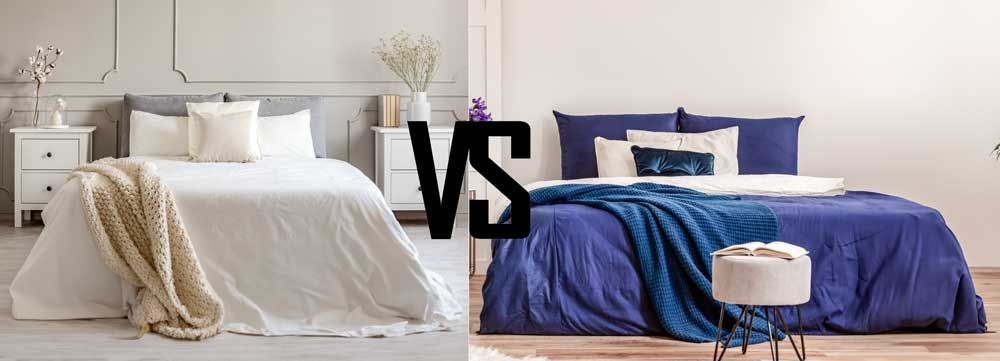
Welcome to this comprehensive comparison of queen and king-sized beds. As someone who has dedicated my career to understanding and sharing sleep science, I'm eager to delve into the details of these two popular bed sizes. Both offer distinct advantages and have unique characteristics that may suit your sleep needs more accurately.
The decision between a queen and king-sized bed depends on many factors. It's not just about the size of your room or budget, your sleeping habits, whether or not you share your bed, and your overall lifestyle. I'll walk you through the dimensions, comfort levels, price points, and other considerations to help you make the most informed choice possible. I've experienced the profound difference the right bed size can make to sleep quality, and I'm here to help guide you through the process.
Factors Impacting Your Sleep Quality
Diving deeper into the intricacies of sleep quality, several essential factors must be considered. Sleep quality isn't merely about the number of hours we spend in bed; it's about the effectiveness of that rest. As someone who has faced and overcome numerous sleep challenges, I understand the complex interplay of elements that can impact how well we sleep. In this section, we'll delve into two influential factors - your sleeping position and any pain you might experience during sleep.
Sleeping Positions and Their Impact on Your Sleep
Your sleeping position is more than just a comfort preference; it can significantly impact your sleep quality and overall health. Each sleeping position has its benefits and potential drawbacks. When choosing between a queen or king-size bed, it's essential to consider your preferred sleeping position, as each position can demand different amounts of space and support.
Side Sleeping
Side sleeping is one of the most common positions and one that I've personally found to be comfortable. However, it requires the right support to ensure proper spinal alignment and pressure relief. If you're a side sleeper, you'll need to consider a bed that provides enough space to switch sides comfortably during the night without disrupting your partner or ending up on the edge of the bed. Both queen and king-sized beds can cater to side sleepers, but your choice will depend on your specific needs and those of your sleeping partner, if applicable.
Back Sleeping
As a former back sleeper, I understand this sleeping position's specific needs. Back sleepers require a bed that offers enough support to maintain the spine's natural curvature while still providing comfort. A larger bed, such as a king, might be suitable for back sleepers who move around during sleep, while a queen-size bed might be enough for those who remain relatively still.
Stomach Sleeping
Stomach sleeping is generally discouraged due to its strain on the neck and spine. However, if you're a stomach sleeper, like I used to be, choosing the right bed size can help alleviate some of these issues. Having enough space to move around can make this position more comfortable, so consider this when deciding between a queen and king-sized bed.
Pain Experienced During Sleep
Experiencing pain during sleep is a reality for many people, myself included. It can significantly disrupt your sleep quality, making choosing the right bed size and mattress type even more essential. If you experience discomfort during sleep, it's worth considering how much space you need to find a comfortable position and how much support your body needs to alleviate pain.
Back and Side Pain
Back and side pain during sleep can be debilitating, and I've experienced how it can ruin a good night's sleep. If you're suffering from back or side pain, a larger bed might provide the space to find comfortable positions or use additional support pillows. Remember, listening to your body's needs when managing pain and ensuring restful sleep is crucial.
Neck and Shoulder Pain
Neck and shoulder pain can significantly impact your sleep quality, and I know this firsthand. The discomfort can make it hard to find a comfortable sleep position and can often lead to disturbed sleep. In such cases, you have a spacious bed where you can move freely to find the most comfortable position. Consider a bed that allows enough space for supportive pillows or cushions without feeling cramped. Both queen and king-sized beds can provide this space, but the choice will depend on your specific needs and the needs of your sleep partner if you have one.
Little to No Pain
If you're fortunate enough to experience little to no pain during sleep, choosing between a queen or king-sized bed can focus more on comfort, aesthetics, and other preferences. Even so, ensuring your bed supports proper body alignment and pressure point relief is crucial to maintain this pain-free state. A larger bed size can provide more room for movement and stretching, leading to more relaxed and rejuvenating sleep.
Material Preferences for Optimal Comfort
Regarding mattress materials, personal preference plays a crucial role in determining comfort. Each type of mattress material provides a unique feel and offers different benefits. As someone who's experimented with various materials, I understand how this choice can impact your sleep quality.
Innerspring
Innerspring mattresses are popular for their traditional feel and bounce. If you prefer a more responsive mattress with a bit of spring, an innerspring mattress could be a great choice. In my experience, innerspring mattresses can also be a good option for hot people, as the open coil construction allows for better airflow.
Foam
Foam mattresses, such as memory or latex foam, provide excellent contouring and pressure relief. If you like me and appreciate a mattress that hugs your body and reduces pressure points, a foam mattress could be perfect. They're also excellent for reducing motion transfer, which is beneficial if you share your bed with a partner.
No preference/Other
You have plenty of options if you need more clarification about your material preference or are open to other types like hybrids or airbeds. In my journey, I've learned that sometimes it's all about trial and error until you find the mattress material that best suits your needs.
Thermal Comfort - Do you sleep hot or cold?
Your thermal comfort is another crucial factor when choosing your bed size. Whether you sleep hot or cold can influence the type of mattress you select and the size of your bed, especially if you share it.
Yes: As someone who tends to sleep hot, I know the importance of choosing a bed size that allows enough space for air to circulate. Like a king, a larger bed can provide this space and help maintain a cooler sleep environment. Your bedding choices and mattress material can also significantly influence your thermal comfort.
No: If you don't have specific thermal preferences or tend to sleep cold, the size of your bed may be influenced by this factor. However, having a larger bed can allow for more or heavier bedding, which can be beneficial if you tend to sleep cold.
Sharing Your Bed – Do you sleep with a partner or pet?
Sharing your bed with a partner or pet is a significant factor in choosing between a queen and king-sized bed. As someone who has shared my bed with a partner and pets, I understand the need for adequate space for everyone to sleep comfortably.
Yes: If you're sharing your bed, a king-sized bed can provide more room for everyone to sleep comfortably without disturbing each other. It allows you and your partner to move freely throughout the night, leading to better sleep quality. Having experienced the benefits of a king bed while sharing, consider considering this size if space and budget allow.
No: A queen-sized bed might provide ample space to sleep comfortably if you sleep alone. However, even as a solo sleeper, you may still prefer a king-sized bed's additional space. It's all about understanding your personal sleep habits and preferences.
Queen vs. King Beds: Detailed Comparison
Choosing between a queen and a king-sized bed involves carefully analyzing various factors. In this section, I'll share my insights from personal experiences and deep knowledge in this field to compare these two-bed sizes in terms of dimensions, comfort, price, and accessorizing potential. It's important to note that while these comparisons provide a general guideline, your personal needs and preferences should always come first in your decision-making process.
Dimensions and Size: How Much Space Do You Need?

Firstly, let's delve into the dimensions of king and queen-sized beds. A standard queen-sized bed typically measures 60 x 80 inches, providing ample space for an individual or a couple to sleep comfortably. It's a size I've found to be versatile, fitting well in most average-sized bedrooms while still leaving room for other furniture.
On the other hand, a king-sized bed measures
76 x 80 inches, offering a significantly larger sleeping area. If you're like me and enjoy the luxury of a spacious sleep surface, or if you share your bed with a partner and want more personal space, a king-sized bed could be an excellent choice. However, it's essential to consider the size of your bedroom. A king bed requires a larger room to accommodate the bed and allow for comfortable movement.
Comfort Factors: Sleep Quality on Different Bed Sizes
From a comfort perspective, queen and king-sized beds have unique advantages. Having experienced sleeping on both, I can attest that comfort is influenced by the size and the mattress type, your sleeping position, whether you sleep alone or with a partner, and your personal comfort preferences.
A queen-sized bed provides sufficient space for most individuals or couples to sleep comfortably. However, if you or your partner are taller or need more sleeping space, you might find a king-sized bed more comfortable. King-sized beds are also excellent for families with children who may occasionally join them in bed.
Price Comparison: Making the Most of Your Budget
Price is another essential factor when choosing between a king and queen bed. Generally, king-sized beds are more expensive than queen-sized ones due to their larger size. The price difference extends to accessories like frames, mattresses, sheets, and comforters, which are typically more costly for king-sized beds.
A queen-sized bed might be more cost-effective if you're on a budget. However, if you have room for a king-sized bed and value the additional space, the extra cost could be worthwhile. Investing in a larger bed can often improve sleep quality and comfort.
Accessorizing Your Bed: Bedding and More
Finally, let's consider the accessorizing potential of king and queen-sized beds. Bed accessories, such as bedding sets, frames, headboards, and bedside tables, can significantly influence your bed's aesthetic appeal and functionality.
For queen-sized beds, you'll find various accessories available in various styles and price ranges. The slightly smaller size also means that bedding and other accessories are usually less expensive than their king-sized counterparts.
King-sized beds offer a grander aesthetic appeal due to their larger size. They allow for more substantial accessories, like bigger headboards or wider bedside tables. However, these accessories are typically more expensive. Accessorizing a king-sized bed can be a little more challenging but can lead to a more personalized and luxurious sleep environment.
Recommended Room Size for Queen and King Beds
The size of your room is a significant factor in determining whether to go for a queen or king-sized bed. Having experienced the difference room size can make, I recommend that a queen-sized bed needs at least a 10 x 10 feet room to allow for comfortable movement and additional furniture. If your room is smaller than this, you may find it cramped.
On the other hand, a king-sized bed requires more space. Ideally, your room should be 12 x 12 feet to comfortably accommodate a king bed and leave room for other pieces of furniture. A king bed in a small room can limit your movement and make the space feel overcrowded.
Evaluating If a Queen Bed is the Right Choice for You
Queen beds offer a balance of comfort and versatility. They can comfortably sleep two average-sized adults or provide luxurious space for a single sleeper. As someone who's spent many nights on a queen bed, they are a fantastic choice for couples who don't require as much personal sleeping space or single sleepers who want extra room.
You might also find a queen bed suitable if you're mindful of budget and space constraints. Queen beds typically come with lower costs for the bed itself and related purchases such as bedding and room accessories. Their slightly smaller size makes them a good fit for most average-sized bedrooms.
Evaluating If a King Bed is the Right Choice for You
With its expansive sleeping area, the king bed brings a sense of luxury and abundance. If you cherish a spacious sleeping environment like me, then a king bed could be your perfect match. It's particularly suited for couples who appreciate more personal sleeping space or for families with young children who may share the bed.
However, it's important to remember that a king bed requires a larger room and budget. The bed itself will be more expensive, as will the bedding and accessories. But, as someone who's invested in a king-sized bed, I can affirm the investment was worthwhile for the comfort and luxury it provides.
Deep Dive Into Other Mattress Sizes and Dimensions
Understanding mattress sizes beyond the queen and king can help you make a more informed decision. Here, I'll compare Twin XL and Full mattresses and California King and King mattresses based on my experience and expertise.
Twin XL vs. Full
A Twin XL mattress typically measures 38 x 80 inches, making it the same length as a queen or king mattress but significantly narrower. As someone who's spent time on a Twin XL, it's a great choice for taller individuals who sleep alone.
On the contrary, a Full mattress, also known as a Double, measures 54 x 75 inches. It provides more width than a Twin XL, making it a good option for single sleepers who want more space or for two smaller individuals. However, the full mattress is shorter, so taller individuals may find it less comfortable.

A California King mattress measures 72 x 84 inches, making it slightly narrower but longer than a standard King mattress, which measures 76 x 80 inches. I've found the California King's extra length beneficial as someone tall. However, the standard King mattress may be a more suitable choice for most individuals or couples who value extra width over length. These dimensions' consideration is especially important if you're sharing your bed, and it's a factor that's helped me make the best bed choice in the past.
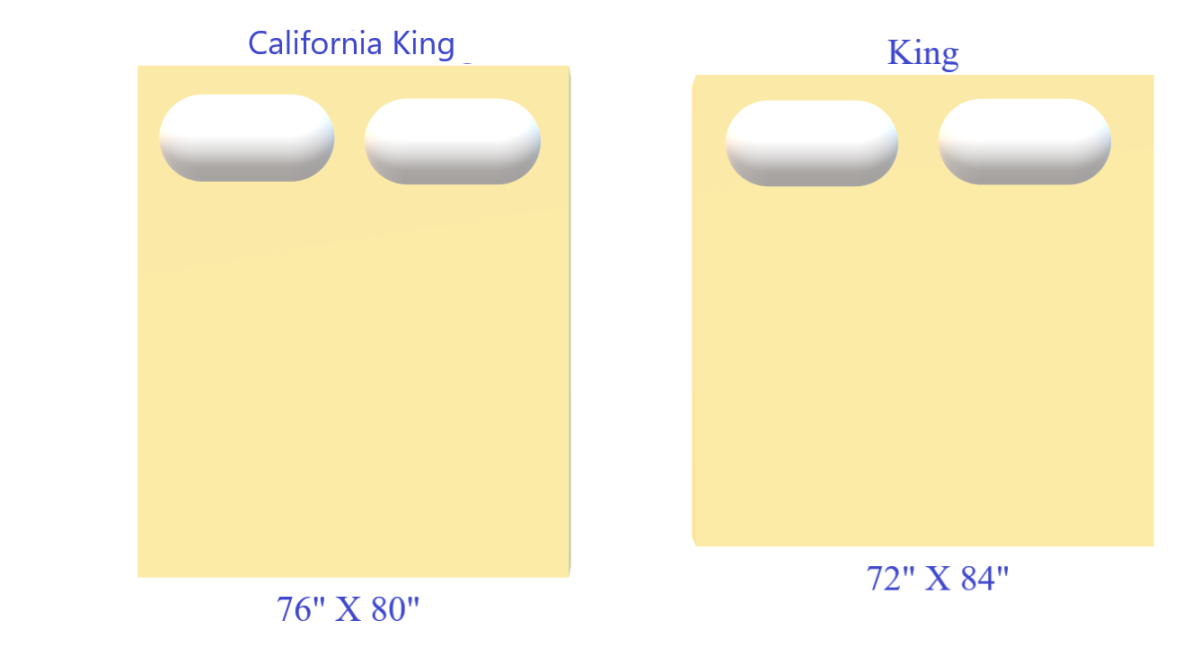
Full vs. Queen
Full mattresses, also known as doubles, measure 54 x 75 inches, making them wider than a twin but shorter than a queen. A full mattress is a good choice for single adults who prefer more sleeping space. However, for two adults, it might feel cramped.
In contrast,
queen mattresses measure 60 x 80 inches, providing more width and length than a full. As a seasoned queen bed user, I can attest that this size is versatile and well-suited for most adults and couples, offering a good balance of personal space and comfort.
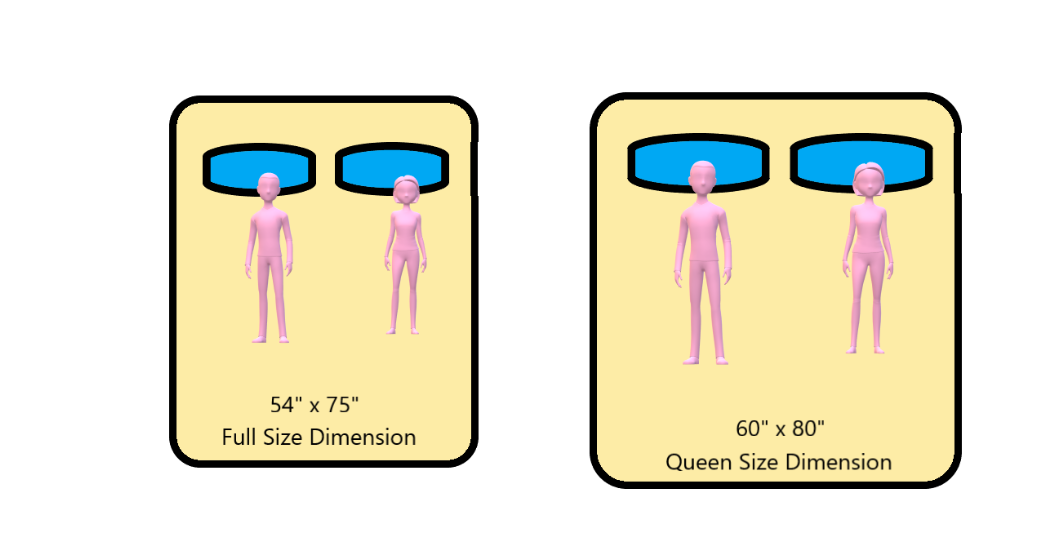
Twin vs. Twin XL
A standard twin mattress measures 38 x 75 inches, making it an excellent choice for children, teenagers, or single adults with limited space. Having had a twin mattress during my teenage years, I recall it offering adequate sleeping space.
A Twin XL, on the other hand, adds an extra 5 inches to the length, measuring 38 x 80 inches. This extra length can make a significant difference for taller teenagers or adults. I appreciated this additional space when I used a Twin XL.
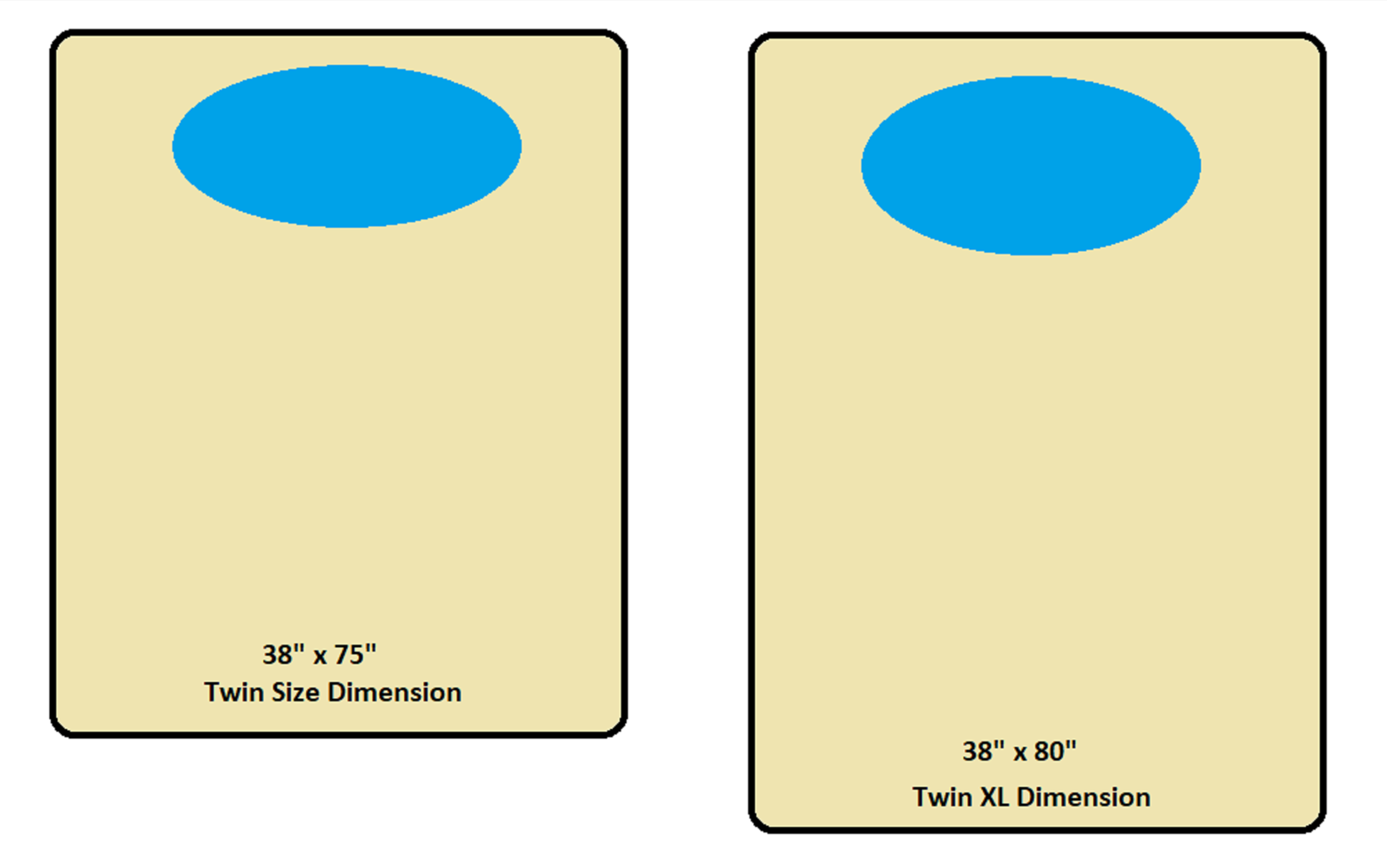
Single vs. Twin
In mattress parlance, 'single' and 'twin' typically refer to the same size - 38 x 75 inches. This size is commonly used in children's bedrooms, dorm rooms, or guest rooms. Having used a single/twin bed, I can vouch for its convenience for solo sleepers with limited space.
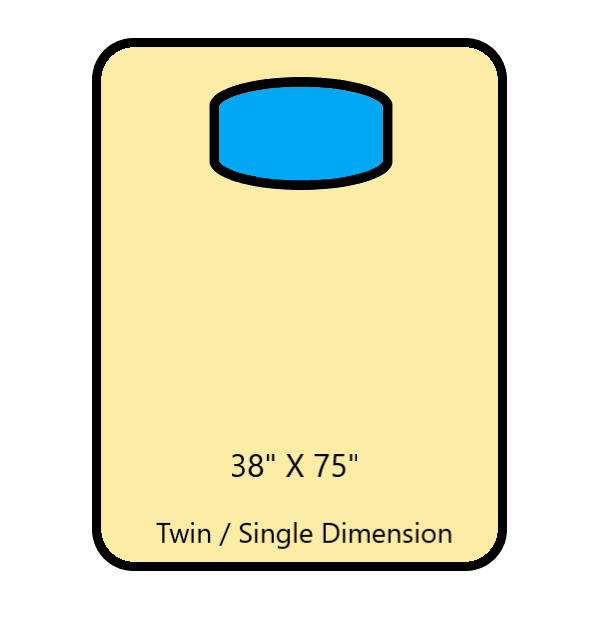
Overview of Oversized Mattress Sizes
Beyond the standard mattress sizes, there are also oversized options available. These include sizes like the California King, Wyoming King (84 x 84 inches), Texas King (80 x 98 inches), and Alaska King (108 x 108 inches). These sizes offer an extraordinary amount of sleeping space and can be a great choice for larger bedrooms or families who co-sleep. I've experienced the luxurious space these oversized mattresses provide, and it's truly a unique experience.
RV Mattress Sizes: A Special Mention
RV mattresses are designed to fit in the compact living quarters of a recreational vehicle. Their dimensions vary, but they are typically smaller than standard residential mattresses. Understanding RV mattress sizes can ensure you find the right fit for your vehicle and enjoy a comfortable sleep while on the road.
Conclusion: Choosing the Right Bed Size for Your Optimal Sleep
Choosing the right bed size ensures optimal sleep quality and comfort. I've experienced the impacts that a well-selected bed size can have on sleep, and I can't stress enough the importance of considering factors like room size, number of sleepers, personal space preferences, and budget.
Whether you're deciding between a queen and a king, a full and a queen, or any other bed size, remember that the goal is to create a sleep environment that supports your well-being and aligns with your lifestyle. Use the information I've shared, based on my expertise and personal experiences, to guide your decision-making process. With thoughtful consideration, you'll find the perfect bed size for your sleep sanctuary.
Frequently Asked Questions
-
What are the dimensions of a queen and king bed?
A standard queen bed measures 60 x 80 inches, providing ample space for single sleepers or couples. A king bed is larger, measuring 76 x 80 inches, offering more personal space, especially for couples.
-
How much room size is ideal for a queen or king bed?
Generally, a queen-sized bed is suitable for rooms that are at least 10 x 10 feet, leaving enough space for other furniture and free movement. A king-sized bed, due to its larger size, ideally needs a room that's at least 12 x 12 feet.
-
Is a king bed a better choice for me if I sleep with a partner?
A king bed provides more personal sleeping space, making it a popular choice for couples. However, it also depends on your individual sleeping habits and the amount of space you prefer. Queen beds can also comfortably accommodate two average-sized adults.
-
Are there significant cost differences between queen and king beds?
Yes, king beds are typically more expensive than queen beds due to their larger size. This cost difference extends to related purchases such as bedding and accessories. It's important to consider your budget when deciding between the two sizes.
-
How do queen and king beds compare in terms of comfort?
Both queen and king beds provide a high level of comfort, and the choice between the two often comes down to personal preference. Some people prefer the extra space that a king offers, especially if sharing with a partner, while others find a queen bed perfectly adequate and cozy. Your sleeping habits, room size, and preference for personal space should all factor into this decision.